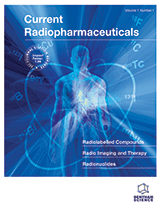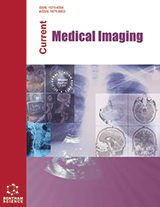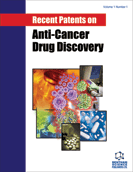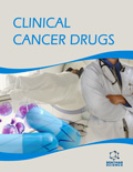Abstract
Due to rapid emergence of recombinant and antibody-based reagents targeting specifically biomarkers of disease, radiolabeling of antibodies has enabled the imaging and therapy of various reactive oxygen species (ROS)-mediated pathological conditions, such as cancer. Key contributions to this topic have been dissected through two main standpoints: (1) immunotherapeutics for advanced cancer care, including radiolabeling for cancer imaging and therapy, design and testing of antibodies, and radioimmunotherapy innovations for treating malignancies and (2) search for a more efficient drug-targeted delivery method for cancer therapy. Because tremendous progress has been made in recent years, the future of cancer radioimmunotherapy is suggested to be bright. The question, whether measurement of oxidative damage to DNA has clinical relevance, is addressed. To make biomarkers of oxidatively damaged DNA useful clinical tools, further validation of biomarkers, followed by further elucidation of the role of damage in disease, is suggested. To understand the role of oxidative damage by focusing on cellular processes under oxidative stress conditions, the complementarities of mechanistic cell biology studies and systems biology strategies in identifying new therapeutic targets are demonstrated for liver cancer cells. Since most morphological, physiological and molecular studies on death of cells in tissues have been carried out on isolated cell populations, systems biology is suggested to be a means of overcoming known difficulties manifested by interference and interaction with surrounding cells. The elucidation of fundamental background of the ability of cells to interpret the same signal action in distinct fashions - survival vs. death signal transduction is suggested to facilitate more localized and efficient treatments of various ROS-mediated pathologies.
Keywords: Cancer radiotherapy, imaging, biomarkers, cell death, systems biology
Current Radiopharmaceuticals
Title: Recent Advances in Radiation Therapy of Cancer Cells: A Step towards an Experimental and Systems Biology Framework
Volume: 1 Issue: 1
Author(s): Petar M. Mitrasinovic and Marija L. Mihajlovic
Affiliation:
Keywords: Cancer radiotherapy, imaging, biomarkers, cell death, systems biology
Abstract: Due to rapid emergence of recombinant and antibody-based reagents targeting specifically biomarkers of disease, radiolabeling of antibodies has enabled the imaging and therapy of various reactive oxygen species (ROS)-mediated pathological conditions, such as cancer. Key contributions to this topic have been dissected through two main standpoints: (1) immunotherapeutics for advanced cancer care, including radiolabeling for cancer imaging and therapy, design and testing of antibodies, and radioimmunotherapy innovations for treating malignancies and (2) search for a more efficient drug-targeted delivery method for cancer therapy. Because tremendous progress has been made in recent years, the future of cancer radioimmunotherapy is suggested to be bright. The question, whether measurement of oxidative damage to DNA has clinical relevance, is addressed. To make biomarkers of oxidatively damaged DNA useful clinical tools, further validation of biomarkers, followed by further elucidation of the role of damage in disease, is suggested. To understand the role of oxidative damage by focusing on cellular processes under oxidative stress conditions, the complementarities of mechanistic cell biology studies and systems biology strategies in identifying new therapeutic targets are demonstrated for liver cancer cells. Since most morphological, physiological and molecular studies on death of cells in tissues have been carried out on isolated cell populations, systems biology is suggested to be a means of overcoming known difficulties manifested by interference and interaction with surrounding cells. The elucidation of fundamental background of the ability of cells to interpret the same signal action in distinct fashions - survival vs. death signal transduction is suggested to facilitate more localized and efficient treatments of various ROS-mediated pathologies.
Export Options
About this article
Cite this article as:
Mitrasinovic M. Petar and Mihajlovic L. Marija, Recent Advances in Radiation Therapy of Cancer Cells: A Step towards an Experimental and Systems Biology Framework, Current Radiopharmaceuticals 2008; 1 (1) . https://dx.doi.org/10.2174/1874471010801010022
| DOI https://dx.doi.org/10.2174/1874471010801010022 |
Print ISSN 1874-4710 |
| Publisher Name Bentham Science Publisher |
Online ISSN 1874-4729 |
 16
16
- Author Guidelines
- Bentham Author Support Services (BASS)
- Graphical Abstracts
- Fabricating and Stating False Information
- Research Misconduct
- Post Publication Discussions and Corrections
- Publishing Ethics and Rectitude
- Increase Visibility of Your Article
- Archiving Policies
- Peer Review Workflow
- Order Your Article Before Print
- Promote Your Article
- Manuscript Transfer Facility
- Editorial Policies
- Allegations from Whistleblowers
Related Articles
-
Chronic Eosinophilic Leukemia, Not Otherwise Specified (CEL, NOS)
Current Cancer Therapy Reviews Cytochrome P450 Gene Polymorphism and Cancer
Current Drug Metabolism Tumor Stem Cell Niches: A New Functional Framework for the Action of Anticancer Drugs
Recent Patents on Anti-Cancer Drug Discovery Development of Fourth Generation ABC Inhibitors from Natural Products: A Novel Approach to Overcome Cancer Multidrug Resistance
Anti-Cancer Agents in Medicinal Chemistry Synthesis, Radiosynthesis and Metabolism of 131I-Y-c(CGRRAGGSC)
Anti-Cancer Agents in Medicinal Chemistry Evolution of Chemosensitivity and Resistance Assays as Predictors of Clinical Outcomes in Epithelial Ovarian Cancer Patients
Current Pharmaceutical Design Characteristic Alterations of Nuclear Structure and Chromatin Organisation of Cancer Cells Addressed by Proteome Analysis**
Current Proteomics Rationale for New Drugs Targeting the Tissue Microenvironment in Patients with HCC
Current Pharmaceutical Design Withdrawal Notice: Reconnoitering the Role of Endothelin in Obesity
Current Pharmaceutical Design Fetuin-A: A Multifunctional Protein
Recent Patents on Endocrine, Metabolic & Immune Drug Discovery (Discontinued) Isatoic Anhydride: A Fascinating and Basic Molecule for the Synthesis of Substituted Quinazolinones and Benzo di/triazepines
Current Organic Chemistry Delivery Systems for Birch-bark Triterpenoids and their Derivatives in Anticancer Research
Current Medicinal Chemistry Effects of Paliroden (SR57667B) and Xaliproden on Adult Brain Neurogenesis
Current Alzheimer Research Statins and Protein Prenylation in Cancer Cell Biology and Therapy
Anti-Cancer Agents in Medicinal Chemistry Pharmacological Intervention at CCR1 and CCR5 as an Approach for Cancer: Help or Hindrance
Current Topics in Medicinal Chemistry Histone Deacetylase Inhibitors in Psoriasis Therapy
Current Drug Targets - Inflammation & Allergy Banking Strategies for Improving the Hematopoietic Stem Cell Content of Umbilical Cord Blood Units for Transplantation
Current Stem Cell Research & Therapy Organic Synthesis of C-Prenylated Phenolic Compounds
Current Organic Chemistry Targeting Signalling Pathways in Hepatocellular Carcinoma
Current Pharmaceutical Design Oxazole-Based Compounds As Anticancer Agents
Current Medicinal Chemistry






















